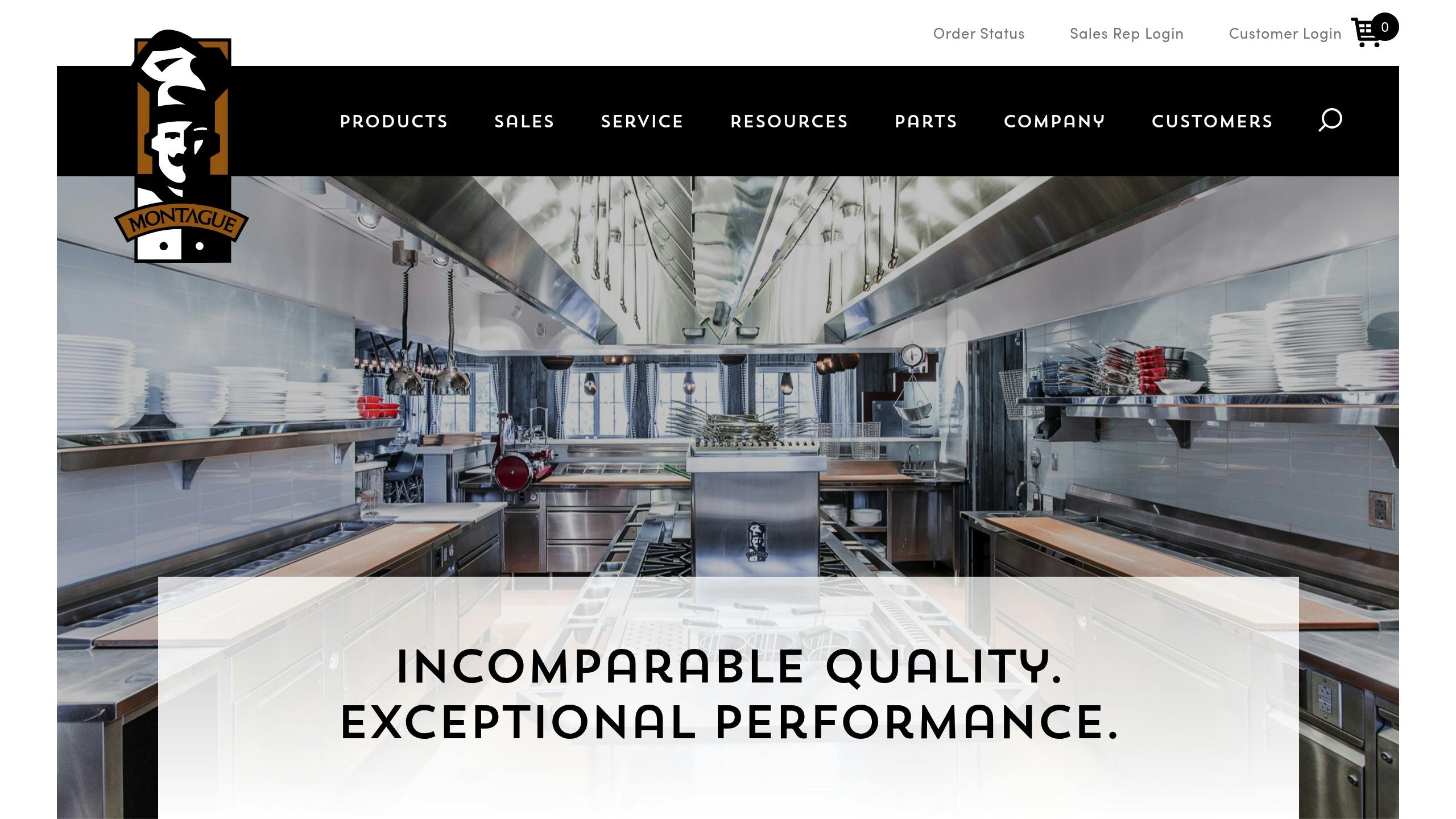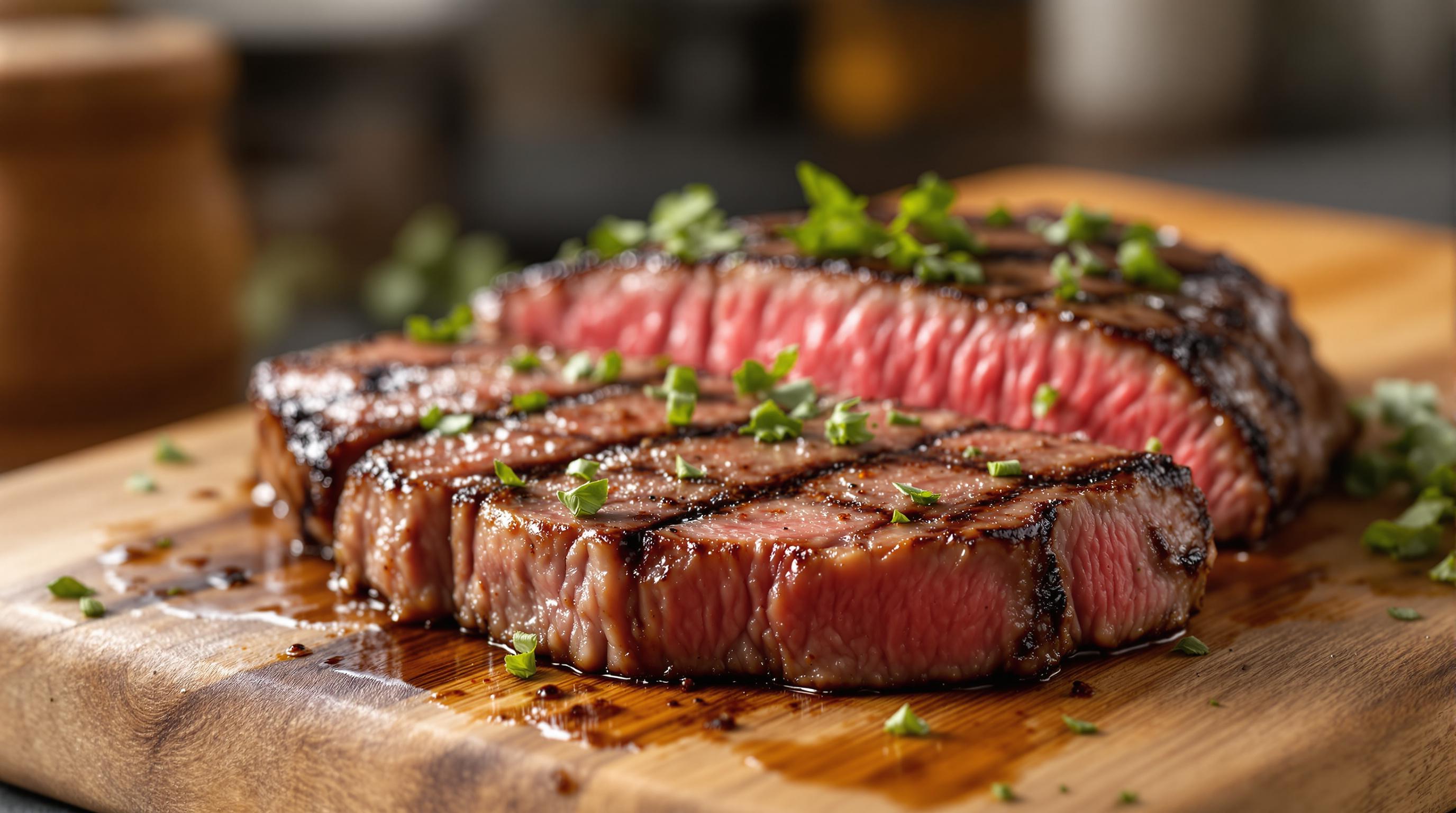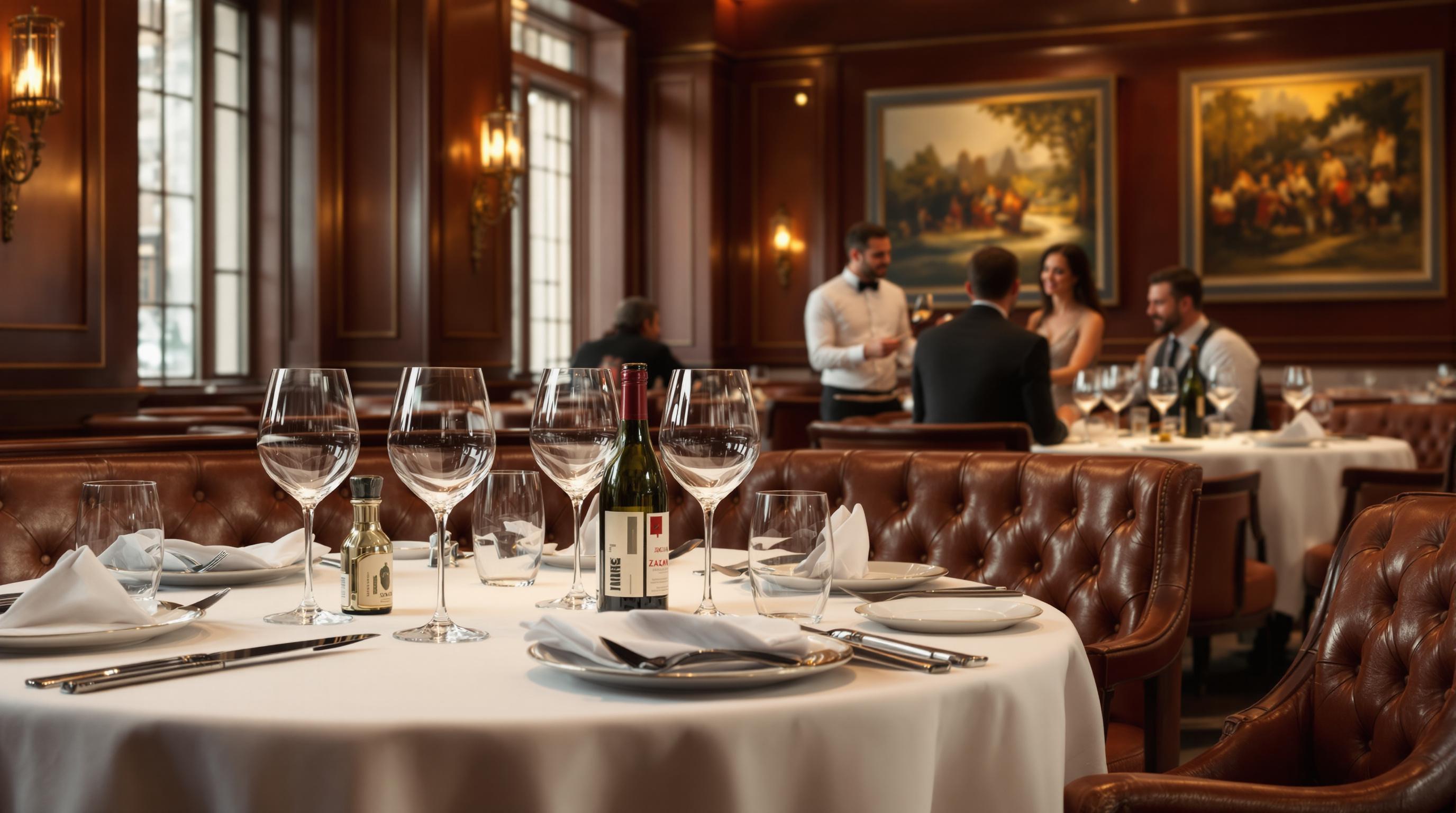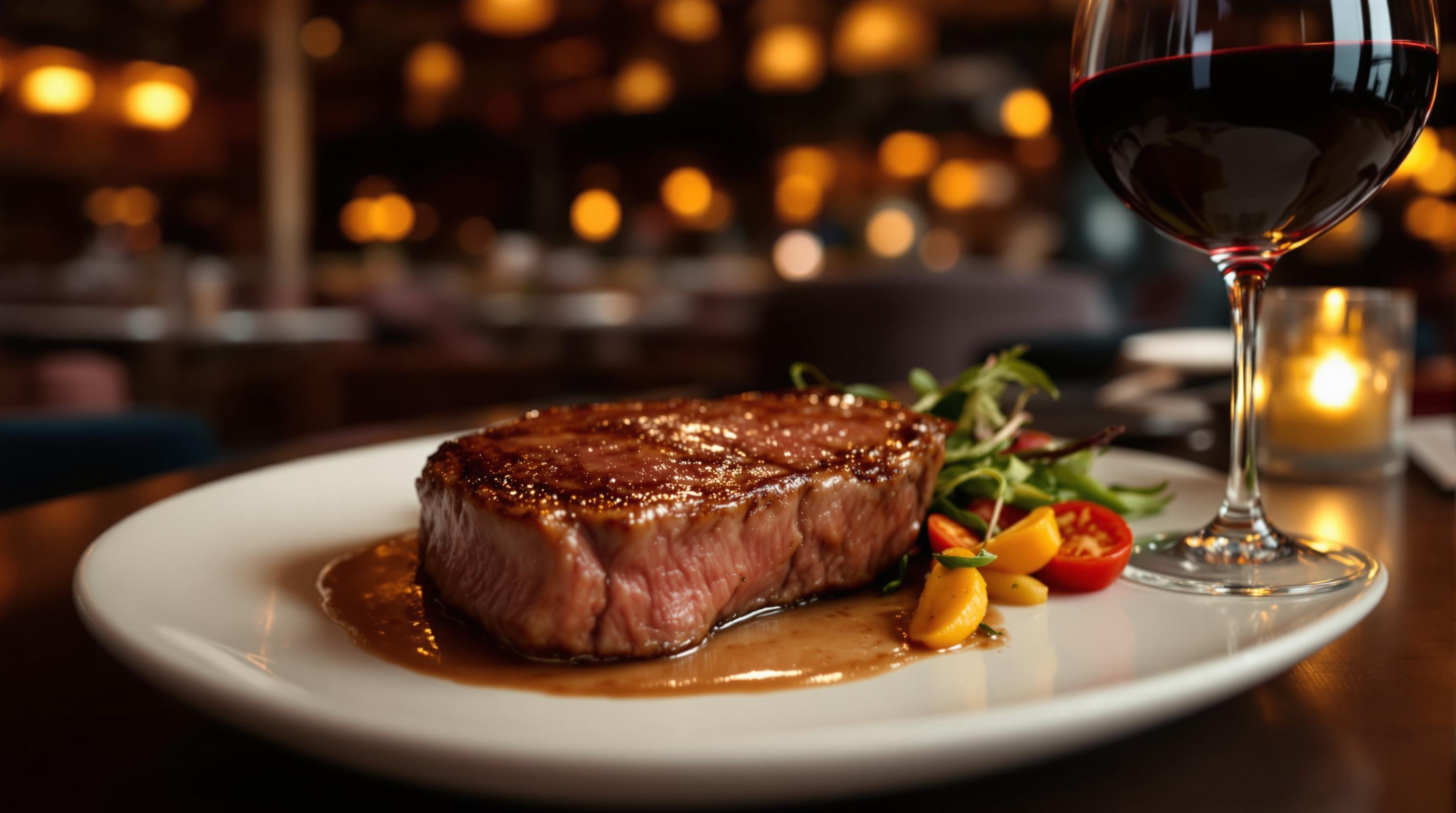Steakhouses use 900°F broilers to create the perfect steak: a crispy, caramelized crust with a juicy, tender interior. This extreme heat allows for quick cooking, locking in moisture and enhancing flavor through the Maillard reaction. Here's why it works:
- High Heat Advantage: 900°F sears the steak instantly, creating a flavorful crust while keeping the inside tender.
- Speed & Consistency: Cuts cooking time, making it ideal for busy kitchens.
- Flavor Boost: Rapid fat rendering and crust formation amplify taste.
Steakhouse Broiler Types:
| Broiler Type | Heat Source | Features |
|---|---|---|
| Infrared | Gas-powered ceramic plates | Even heat, precise control |
| Salamander | Electric or gas elements | Adjustable, great for finishing |
At home, you can’t hit 900°F, but tools like cast iron skillets, home broilers, or outdoor grills (up to 700°F) can help you achieve similar results with the right techniques.
Montague Steakhouse Broiler

Heat Science in Steak Cooking
Achieving steakhouse-quality steak relies on precise, high-heat cooking that transforms both proteins and sugars. At a scorching 900°F (482°C), several key chemical and structural changes take place, giving steak its signature sear and flavor.
Maillard Reaction: The Secret to the Crust
When the surface of the meat reaches temperatures above 300°F (149°C), the Maillard reaction kicks in. At 900°F, this reaction works rapidly, creating:
- Rich, savory flavors that define a great steak
- A deep brown crust that locks in juices
- Complex aromas that elevate the overall experience
This reaction not only builds flavor but also forms a protective crust, keeping the interior tender and juicy. But that's not all - extreme heat also reshapes the meat's structure.
How High Heat Affects Meat Structure
Cooking at 900°F does more than just enhance flavor; it also changes the meat's physical properties in stages, ensuring a tender and juicy result. Here's a breakdown:
| Temperature | Structural Changes | Impact on Steak |
|---|---|---|
| 120°F (49°C) | Proteins begin to change | Meat starts to firm up |
| 130-140°F (54-60°C) | Collagen begins to soften | Steak becomes more tender |
| 160°F (71°C) | Fat starts to render | Juiciness increases |
| 900°F (482°C) surface temp | Proteins coagulate quickly | Forms a crust that seals in moisture |
At 900°F, the surface proteins contract rapidly, creating that sought-after crust while the interior cooks more gently. Surface fat melts almost instantly, basting the steak and adding layers of flavor and moisture.
This intense heat creates a sharp contrast between the caramelized crust and the perfectly cooked interior. The result? A steak with a bold, flavorful exterior and a juicy, tender center - just like at your favorite steakhouse.
Why Steakhouses Choose 900°F Broilers
Steakhouses rely on 900°F broilers to improve both cooking efficiency and steak quality. This high heat allows for faster service, a flawless sear, and richer flavors.
Speed and Consistency in Service
Cooking at 900°F significantly reduces the time needed compared to standard methods. This means kitchens can handle busy periods more efficiently, keeping service running smoothly. Plus, the quick cooking process ensures steaks are consistent in quality every time.
Achieving the Perfect Sear
The intense heat of a 900°F broiler creates the ideal conditions for a beautifully seared crust. This high temperature browns the steak's surface almost instantly, giving it a visually appealing, even crust. But it’s not just about looks - the sear also enhances the steak’s flavor through high-heat reactions.
Boosting Flavor
The rapid cooking process of a 900°F broiler helps render fats quickly, amplifying the steak's flavor. This method locks in the meat’s natural juices, delivering a rich and well-balanced taste that diners love.
sbb-itb-e6be165
Professional Broiler Equipment
Professional broilers are a must-have for busy kitchens, providing intense heat and consistent results.
Infrared and Salamander Broilers
There are two main types of broilers commonly used in professional kitchens:
- Infrared broilers: These use heated ceramic plates or metal screens to quickly reach temperatures of up to 900°F. They’re perfect for searing steaks while keeping the inside juicy.
- Salamander broilers: Mounted above the cooking surface, these broilers offer focused heat and adjustable rack positions, making them ideal for precise finishing tasks.
Both types are essential for creating that classic steakhouse sear, but they also require careful handling and upkeep to maintain performance.
Safety and Maintenance at 900°F
Operating at such high temperatures comes with unique safety and maintenance demands. Modern broilers are equipped with various safety features, including:
- Automatic temperature shutoff to prevent overheating.
- Exterior insulation to keep surfaces cool to the touch.
- Specialized ventilation designed for high-heat environments.
Keeping broilers in top condition involves regular maintenance, such as:
- Cleaning grates, grease traps, heating elements, and gas connections.
- Inspecting ventilation systems to ensure proper airflow.
- Calibrating temperature controls for accurate heat output.
- Servicing fire suppression systems to meet safety standards.
Fire suppression systems are particularly important for high-temperature cooking. Routine inspections help ensure compliance with safety regulations and insurance requirements, keeping your kitchen running smoothly and safely.
High-Heat Cooking Methods at Home
Home Kitchen Equipment Options
You might not have access to 900°F like a steakhouse, but with the right tools and techniques, you can still get an incredible sear on your steak. Here are some reliable options for high-heat cooking at home:
- Cast Iron Skillet: A well-seasoned 12-inch cast iron skillet can reach up to 600°F when preheated properly. Its heavy-duty construction ensures excellent heat retention and even distribution, which is crucial for creating that perfect crust.
- Home Broiler: Most residential ovens have broilers that operate between 500°F and 550°F. While not as intense as commercial broilers, they can still deliver great results with proper technique.
- Outdoor Grill: Gas grills can reach temperatures of 600–700°F in their hottest zones, while charcoal grills often exceed 700°F when airflow is optimized.
| Cooking Method | Max Temperature | Best For |
|---|---|---|
| Cast Iron Skillet | 600°F | Even searing, controlled heat |
| Home Broiler | 500–550°F | Top-down heating, finishing |
| Gas Grill | 600–700°F | Large cuts, outdoor cooking |
| Charcoal Grill | 700°F+ | Extreme heat, smoky flavor |
Choosing the right equipment is step one; next, it’s all about technique to achieve steakhouse-level results.
Steps for Better Steak Results
Once you’ve got your tools ready, follow these steps to cook steak like a pro:
-
Prepare the Steak Properly
- Take the steak out of the fridge and let it sit at room temperature for 30–45 minutes. This helps it cook more evenly.
- Pat the steak dry with paper towels to remove surface moisture for a better sear.
- Preheat your skillet, broiler, or grill for at least 20 minutes to ensure it’s fully heated.
-
Control Timing and Temperature
- For a 1.5-inch thick ribeye, sear each side for about 3–4 minutes.
- Use an instant-read thermometer to check the internal temperature: aim for 130°F for medium-rare, 140°F for medium.
- Let the steak rest for 5–10 minutes after cooking to allow the juices to redistribute.
-
Treat the Surface Right
- Season generously with kosher salt and freshly ground black pepper.
- Lightly coat the steak with a high-smoke-point oil like avocado or grapeseed oil.
- For an extra touch, finish with a pat of compound butter for added flavor.
The secret lies in maximizing the heat you have and pairing it with these precise techniques.
The Role of 900°F Cooking in Steakhouses
The blazing heat of 900°F broilers is what gives steakhouses their signature touch. This extreme temperature changes the way proteins and fats react, resulting in the iconic crispy, caramelized crust paired with a juicy, tender interior that steak lovers crave.
Here’s what makes 900°F broilers stand out:
- Enhanced crust development for that perfect sear
- Locked-in moisture to maintain juiciness
- Reliable cooking results every time
- Bolder, richer flavors that elevate the dish
Commercial broilers are the only tools capable of achieving this level of precision and flavor. They create the unique texture and taste profiles that define steakhouse-quality steaks. For true steak lovers, this explains why certain flavors and textures can only be achieved with professional-grade equipment. The high-heat method isn’t just about speed - it’s about delivering a dining experience that has shaped the American steakhouse tradition for decades.


